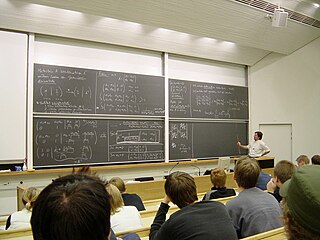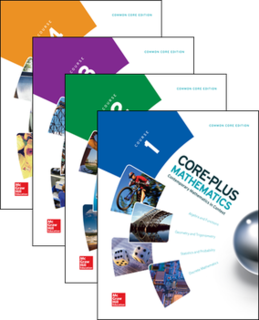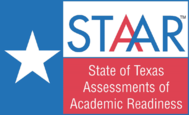Related Research Articles
Science education is the teaching and learning of science to non-scientists, such as school children, college students, or adults within the general public. The field of science education includes work in science content, science process, some social science, and some teaching pedagogy. The standards for science education provide expectations for the development of understanding for students through the entire course of their K-12 education and beyond. The traditional subjects included in the standards are physical, life, earth, space, and human sciences.
In the United States education system, social studies is the integrated study of multiple fields of social science and the humanities, including history, geography, and political science. The term was first coined by American educators around the turn of the twentieth century as a catch-all for these subjects, as well as others which did not fit into the traditional models of lower education in the United States, such as philosophy and psychology. One of the purposes of social studies, particularly at the level of higher education, is to integrate several disciplines, with their unique methodologies and special focuses of concentration, into a coherent field of subject areas that communicate with each other by sharing different academic "tools" and perspectives for deeper analysis of social problems and issues. The social studies aims to train students for informed, responsible participation in a diverse democratic society. The content of social studies provides the necessary background knowledge in order to develop values and reasoned opinions, and the objective of the field is civic competence.

A standardized test is a test that is administered and scored in a consistent, or "standard", manner. Standardized tests are designed in such a way that the questions, conditions for administering, scoring procedures, and interpretations are consistent and are administered and scored in a predetermined, standard manner.

In contemporary education, mathematics education is the practice of teaching and learning mathematics, along with the associated scholarly research.

In education, a curriculum is broadly defined as the totality of student experiences that occur in the educational process. The term often refers specifically to a planned sequence of instruction, or to a view of the student's experiences in terms of the educator's or school's instructional goals. A curriculum may incorporate the planned interaction of pupils with instructional content, materials, resources, and processes for evaluating the attainment of educational objectives. Curricula are split into several categories: the explicit, the implicit, the excluded, and the extracurricular.
The National Science Education Standards (NSES) represent guidelines for the science education in primary and secondary schools in the United States, as established by the National Research Council in 1996. These provide a set of goals for teachers to set for their students and for administrators to provide professional development. The NSES influence various states' own science learning standards, and statewide standardized testing.
Principles and Standards for School Mathematics (PSSM) are guidelines produced by the National Council of Teachers of Mathematics (NCTM) in 2000, setting forth recommendations for mathematics educators. They form a national vision for preschool through twelfth grade mathematics education in the US and Canada. It is the primary model for standards-based mathematics.
Founded in 1920, The National Council of Teachers of Mathematics (NCTM) is the world's largest mathematics education organization.

A Praxis test is one of a series of American teacher certification exams written and administered by the Educational Testing Service. Various Praxis tests are usually required before, during, and after teacher training courses in the U.S.

Core-Plus Mathematics is a high school mathematics program consisting of a four-year series of print and digital student textbooks and supporting materials for teachers, developed by the Core-Plus Mathematics Project (CPMP) at Western Michigan University, with funding from the National Science Foundation. Development of the program started in 1992. The first edition, entitled Contemporary Mathematics in Context: A Unified Approach, was completed in 1995. The third edition, entitled Core-Plus Mathematics: Contemporary Mathematics in Context, was published by McGraw-Hill Education in 2015.
Traditional mathematics was the predominant method of mathematics education in the United States in the early-to-mid 20th century. This contrasts with non-traditional approaches to math education. Traditional mathematics education has been challenged by several reform movements over the last several decades, notably new math, a now largely abandoned and discredited set of alternative methods, and most recently reform or standards-based mathematics based on NCTM standards, which is federally supported and has been widely adopted, but subject to ongoing criticism.
Education reform in the United States since the 1980s has been largely driven by the setting of academic standards for what students should know and be able to do. These standards can then be used to guide all other system components. The SBE reform movement calls for clear, measurable standards for all school students. Rather than norm-referenced rankings, a standards-based system measures each student against the concrete standard. Curriculum, assessments, and professional development are aligned to the standards.
Education in the Philippines is provided by public and private schools, colleges, universities, and technical and vocational institutions in the country. Funding for public education comes from the national government. For the academic year 2017–2018, about 83% of K–12 students attended public schools and about 17% either attended private schools or were home-schooled.
Connected Mathematics is a comprehensive mathematics program intended for U.S. students in grades 6-8. The curriculum design, text materials for students, and supporting resources for teachers were created and have been progressively refined by the Connected Mathematics Project (CMP) at Michigan State University with advice and contributions from many mathematics teachers, curriculum developers, mathematicians, and mathematics education researchers.
Reform mathematics is an approach to mathematics education, particularly in North America. It is based on principles explained in 1989 by the National Council of Teachers of Mathematics (NCTM). The NCTM document, Curriculum and Evaluation Standards for School Mathematics, attempted to set forth a vision for K-12 mathematics education in the United States and Canada. Their recommendations were adopted by many education agencies, from local to federal levels through the 1990s. In 2000, NCTM revised its standards with the publication of Principles and Standards for School Mathematics (PSSM). Like the first publication, these updated standards have continued to serve as the basis for many states' mathematics standards, and for many federally funded textbook projects. The first standards gave a strong call for a de-emphasis on manual arithmetic in favor of students' discovering their own knowledge and conceptual thinking. The PSSM has taken a more balanced view, but still emphasizes conceptual thinking and problem solving.
The Rhode Island Department of Elementary and Secondary Education (RIDE) is a state agency in Rhode Island that oversees the elementary and secondary education system from pre-Kindergarten through high school. It is headquartered in Providence. RIDE works closely with the Rhode Island Office of the Postsecondary Commissioner (RIOPC), the agency charged with overseeing higher education. Together, RIDE and RIOPC aim to provide an aligned, cohesive, and comprehensive education for all students.
From kindergarten through high school, the mathematics education in public schools in the United States has historically varied widely from state to state, and often even varies considerably within individual states. With the recent adoption of the Common Core Standards by 45 states, mathematics content across the country is moving into closer agreement for each grade level.
The Common Core State Standards Initiative is an educational initiative from 2010 that details what K–12 students throughout the United States should know in English language arts and mathematics at the conclusion of each school grade. The initiative is sponsored by the National Governors Association and Council of Chief State School Officers.

The State of Texas Assessments of Academic Readiness, commonly referred to as its acronym STAAR, is a series of standardized tests used in Texas public primary and secondary schools to assess a student's achievements and knowledge learned in the grade level. It tests curriculum taught from the Texas Essential Knowledge and Skills, which in turn is taught by public schools. The test used to be developed by Pearson Education every school year, although the most recent contract gave Educational Testing Service a role in creating some of the tests, under the close supervision of the Texas Education Agency.

An elementary school is a primary school which is the main point of delivery of primary education in the United States, for children between the ages of 5–11 and coming between pre-kindergarten and secondary education.
References
- ↑ Browder, Diane; Spooner, Fred; Wakeman, Shawnee (1 December 2006). "Aligning Instruction with Academic Content Standards: Finding the Link". Research and Practice for Persons with Severe Disabilities. 31 (4): 309–321. doi:10.1177/154079690603100404.
- ↑ "Learning Pathway". Glossary of Education Reform. Great Schools Partnership. 2013-05-15. Retrieved 31 January 2018.
- ↑ Kliebard, Herbert M. (1982). "Education at the Turn of the Century: A Crucible of Curriculum Change". Educational Researcher. 11 (1): 16–24. doi:10.3102/0013189x011001016.
- ↑ Wells, William Harvey (1862). The Graded School: A Graded Course of Instruction for Public Schools. Chicago: G. Sherwood.
- ↑ Button, Henry Warren (December 1965). "Committee of Fifteen". History of Education Quarterly. 5 (4): 253–263. doi:10.2307/367584. JSTOR 367584.
- ↑ Committee of Fifteen on Elementary Education, National Education Association of the United States (1895). Report of the Committee of Fifteen on elementary education: With the reports of the sub-committees; on the training of teachers; on the correlation of studies in elementary education; on the organization of city school systems (1 ed.). Pub. for the National Educational Association by the American Book Company. OCLC 2304784.
- ↑ Feldmann, Doug (2005). "Twenty-Five Years of Erosion in the Curriculum: The Committee of Ten to the Cardinal Principles, 1893-1918". Research for Education Reform. 10 (2): 41–50.
- ↑ "What is the Core Knowledge Sequence". Core Knowledge Foundation. Core Knowledge Foundation. Retrieved 3 April 2013.
- ↑ Goldman, S. R. "Designing for Scaleable Educational Improvement: Processes of Inquiry in Practice". In Scaling up for Success: Lessons Learned from Technology-based Educational Improvement, Ed. C. Dede, J.P Honan, L.C. Peters: 67–96.
- ↑ "Qualitätssicherung in Schulen". KMK. Retrieved 18 March 2015.
- ↑ "Comparing the Common Core State Standards and Singapore's Mathematics Syllabus" (PDF). Achieve, Inc. Retrieved 23 April 2013.
- ↑ Aggregator Site for Standards
- ↑ GEM
- ↑ LOM
- ↑ The SIF standard
- ↑ Higher Ed Competency standards
- ↑ SCORM - Shared Content Object Reference Model